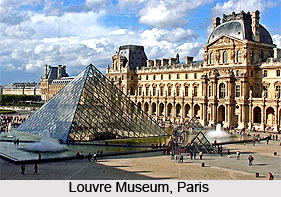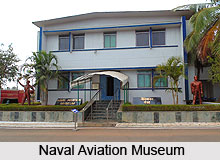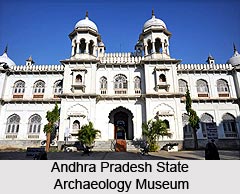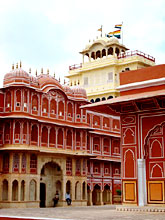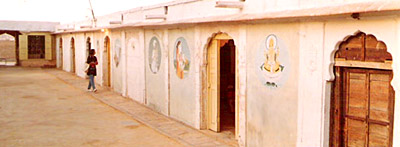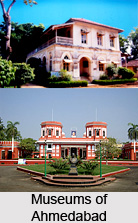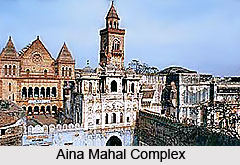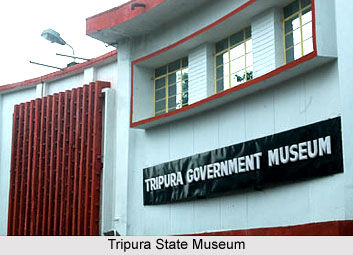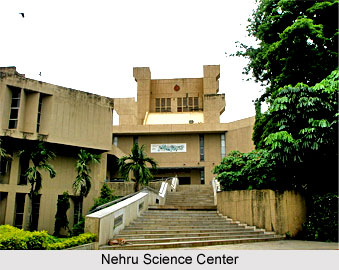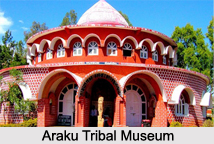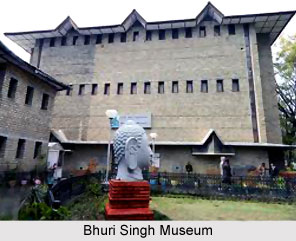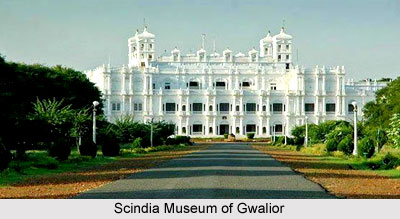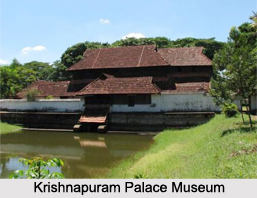 Krishnapuram Palace Museum is located in the Indian state of Kerala. More specifically, this palace museum is situated in Kayamkulam, which is a town in a district called Alappuzha. Globally, it can be pinpointed at coordinates 9 degrees 9 minutes 0 seconds North and 76 degrees 30 minutes 31 seconds East. It is named after Krishnaswamy Temple, a serene village at Krishnapuram, about 2 kilometres (1.2 mi) south of Kayamkulam town. This palace museum is also defined as a protected monument. The Archaeological Department of the Government of Kerala is responsible for the maintenance of this palace museum. The museum inside the palace is called the Archaeological Museum. This palace also houses the offices of the museum.
Krishnapuram Palace Museum is located in the Indian state of Kerala. More specifically, this palace museum is situated in Kayamkulam, which is a town in a district called Alappuzha. Globally, it can be pinpointed at coordinates 9 degrees 9 minutes 0 seconds North and 76 degrees 30 minutes 31 seconds East. It is named after Krishnaswamy Temple, a serene village at Krishnapuram, about 2 kilometres (1.2 mi) south of Kayamkulam town. This palace museum is also defined as a protected monument. The Archaeological Department of the Government of Kerala is responsible for the maintenance of this palace museum. The museum inside the palace is called the Archaeological Museum. This palace also houses the offices of the museum.
History of Krishnapuram Palace Museum
Krishnapuram Palace Museum is a palace of historical significance. It was a replacement palace, built in the place of a palace which was established by King Veera Ravi Varma of Odanad (reign 1700-1775 AD). King Anizham Thirunal Marthanda Varma of Travancore had destroyed this very palace and constructed the Krishnapuram Palace. He had built this palace post winning Odanad in the Odanad–Travancore War in 1746. It is therefore considered that this palace was constructed during the period of 1700-1775 AD.
As monarchy terminated in Krishnapuram Palace, it was reduced to a pitiable condition. It was neglected and ruined and other buildings in the complex were demolished. This affected the total area occupied by the palace complex, which was enclosed within a 10 feet (3.0 m) high compound wall. The total area reduced from 56 acres (23 ha) to a mere 2.55 acres.
Later, Krishnapuram Palace Museum had undergone transformations from being a single storied small palace to a three-storied building within the complex. The single storied building had a pond in the vicinity, a temple and an urappura. Prime Minister, Ramayyan Dalawa is credited with the construction of this single storied building and Prime Minister, Ayyappan Marthanada Pillai is credited with the later expansion of this Palace Museum. Today, the Krishnapuram stands as a three-storied structure as the initiative of the Archaeological Department of Kerala. This structure is known to have been constructed in the 1950s. While his structure was being erected, the safekeeping of the rare documents and artifacts was ensured by temporarily storing them in other places. When these artifacts were brought to its original storehouse, they were started being displayed, thereby turning this palace into a museum.
Architectural Design of Krishnapuram Palace Museum
Krishnapuram Palace Museum is considered to be the finest and rarest representation of the Pathinerakettu Kerala Architectural style. Gabled roofs, narrow corridors and dormer windows are considered to be the typical features of this style of architecture. This palace is considered to be a small replica of the Padmanabhapuram Palace (the headquarters of Travancore Kings). It is made of laterite stones, rubble, teak, rosewood and Angili wood.
Krishnapuram Palace Museum is built according to Vastu Shastra. It has 16 Kettus or blocks, which are provided with 4 Nadumuttam or open area in the centre or courtyards. The roof of this building is steep and Mangalore tiles were used to tile it. This building is provided with 22 rooms. They have ornamental and carved wooden partitions. The windows and doors of the rooms are provided with wooden hinges and locks instead of metallic fittings and fixtures. These windows, doors and ventilators allow fresh air circulation and natural lighting in all the rooms. These rooms open into the shady internal courtyards. Additional openings are also provided to prevent any negative effects of Murmavedham. The floors of the building were created using polished wood and black and red oxide-coated concrete. The steps are made of polished granite blocks. The staircases are differently shaped as curved, straight and spiral. The outer walls of the building are provided with verandas (passages) all round. This arrangement was made to prevent the outer walls from getting damaged due to rains. The palace building also has sunshades. A small stream flows close to the southern part of the palace. It was used as an escape route, during unforeseen emergencies. Extended to the centre of the building was an underground pond. It functioned to moderate the temperature in all the rooms present inside the building. As far as the compound of Krishnapuram palace is concerned, it is adorned by several Padippuras. Padippura means house at gate. The ancient architecture of Kerala is typified by houses with 2 or 3 rooms at the gate. They were constructed to provide accommodation to unknown travelers at night.
Exhibits of Krishnapuram Palace Museum
Krishnapuram Palace is today an archaeological museum, housing a variety of objects of great antiquity. Some of the authentic ancient items preserved in this palace are mural, sword, ceremonial utensils, a copy of the Bible in Sanskrit printed in Calcutta (Kolkata) in 1886, sculptures made of brass and stone, coins, megalithic remains, inscriptions, old paintings and wood artifacts. Another noteworthy example of the relic preserved in the Palace Museum is the Panchaloha figures of the Varuna (water god), many Vishnus and a minuscule devotee in worshipful pose. These figures are made up of five metals of bronze alloy and gold and are considered to be sacred.
The mural of Gajendra Moksham is 3 metres (9.8 ft) high and is reminiscent of the Kerala style of painting. Gajendra Moksham translates into salvation or moksha of the elephant king, Gajendra in English. This mural was placed at the entrance to the palace near the pond, so that the kings could worship their family deity, Lord Vishnu, post their daily ablutions. This mural depicts a mythological scene of an elephant saluting Lord Vishnu in devotion while the other minor gods, goddesses and saints look on. Floriate borders outline the mural. A triptych-like panel, demonstrating Balakrishna, (child Krishna) surrounded by adoring females, is situated at the bottom of the mural. It is considered to be the largest single piece of mural painting discovered in Kerala till date. The Kayamkulam Val is a double edged sword preserved in the palace museum. It is known that this sword was used by the Kayamkulam Kings in the 18th century. One of the 4 antique Buddhas of the 10th century, discovered in the ponds and fields in Alappapuhza district is exhibited in a Buddha mandapam or hall in the palace museum. According to scholars, this figure probably belongs to the 7th century or the 5th century. This antique is made out of a single piece of rock. The skull cap of the figure has lines of pearls or diamonds that symbolizes the highest wisdom attained by the Buddha. A visit to this palace museum will also familiarize a person with the ceremonial utensils. This collection comprises of fine miniature figures, oil lamps and small stone columns carved with serpent deities that were collected from various local houses. Some of these are arranged in an arc form known as prabhu and placed behind a temple deity to provide a "hallow of light".
Visiting Information
Krishnapuram Palace Museum has good transport availability. Nearest airports from Krishnapuram Palace Museum are the Trivandrum International Airport (about103 km) and the Cochin International Airport (about 132 km). Nearest railway station from Krishnapuram Palace Museum is the Kayamkulam Junction, which is located at a distance of about 8 km. Kayamkulam is about 47 km from Alappuzha by road. The National Highway- 47, going via Kayamkulam in Alappuzha district of Kerala is also a viable option to reach Krishnapuram Palace Museum.
Related Articles:
Indian State Museums
Museums of Kerala
City Palace Museum
Hill Palace Museum
Royal Palace Museum
Ramalingavilas Palace Museum
Palace on Wheels
